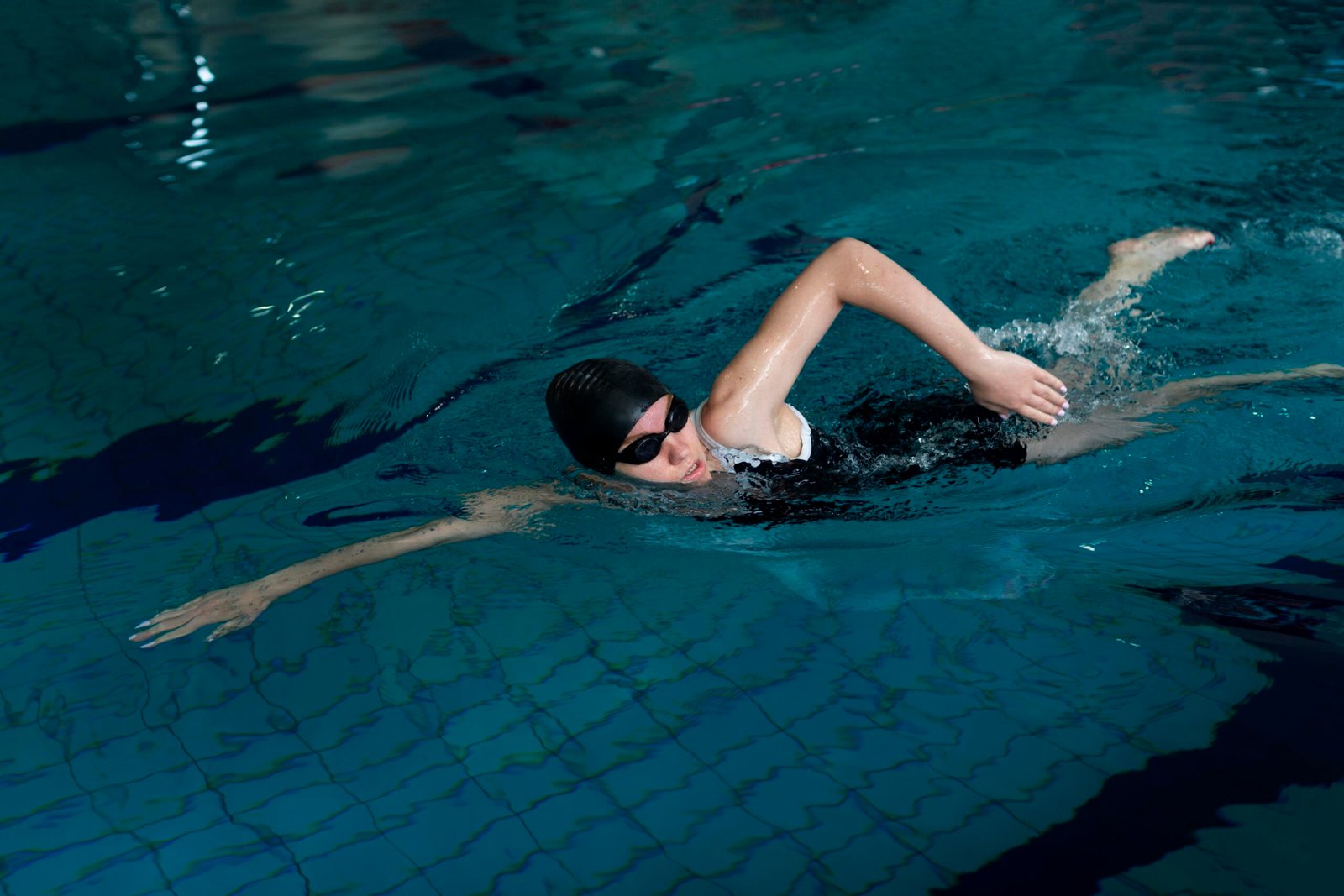Now Reading: Why Swimming Is the Perfect Low-Impact 4 Exercise for Age Group
-
01
Why Swimming Is the Perfect Low-Impact 4 Exercise for Age Group
Why Swimming Is the Perfect Low-Impact 4 Exercise for Age Group

Why Swimming Is the Perfect Low-Impact Exercise for Every Age Group
As I’ve gotten older, staying active has become more about feeling good than just hitting fitness goals. But like many people in my age group, I’ve had to deal with occasional joint pain and stiffness that made high-impact workouts feel more like a chore than a benefit. That’s when I rediscovered swimming—not just as a fun summer activity, but as a powerful, low-impact exercise that works the whole body while being incredibly gentle on the joints.
Swimming offers a unique blend of cardio, strength, and flexibility—all without the pounding impact of running or heavy lifting. Whether you’re in your 30s, 40s, 50s, or beyond, it’s an ideal option to stay fit, relieve stress, and support long-term health. In this post, I’ll share why swimming is the perfect low-impact exercise for people in every age group—and how it’s helped me build strength, stay energized, and actually look forward to moving my body again.
When it comes to exercise that’s easy on the joints, yet effective for the heart, muscles, and mind—swimming tops the list. Whether you’re a teenager, a working adult, or in your senior years, swimming offers an ideal combination of low-impact movement and full-body benefits.
Unlike running or weight training, which can strain joints over time, swimming is a gentle but powerful workout. It supports physical strength, mental clarity, and cardiovascular health—without the risks that often come with high-impact exercise.
we’ll dive into why swimming is one of the best forms of low-impact exercise for all age groups, and how it helps promote lifelong health and wellness.
What Makes Swimming “Low-Impact”?
The term low-impact refers to exercises that put minimal stress on the joints. When you’re in water, your body becomes buoyant, which significantly reduces the pressure on bones, joints, and muscles.
This makes swimming especially suitable for:
- Older adults with arthritis or joint issues
- People recovering from injury
- Beginners who want a low-impact way to get active
- Children and teens looking for safe athletic options
In water, your body moves freely—but with resistance—helping you build strength, stamina, and flexibility without the pounding impact of land-based exercises.
For Kids and Teens: Developing Strong Bodies and Minds
Swimming is often introduced to children early, and for good reason. It’s fun, safe, and developmental. For growing bodies, swimming:
- Builds coordination and muscle tone
- Enhances lung capacity
- Improves cardiovascular endurance
- Teaches life-saving water safety skills
- Boosts confidence and mental well-being
Plus, swimming is often less intimidating than competitive sports and can be enjoyed as a team or solo activity.
Bonus: Kids with ADHD or anxiety often benefit from swimming’s calming, rhythmic movement.
For Adults: Fitness That Fits into Busy Lives
As adults, finding time to exercise while balancing work, family, and personal goals can be tough. That’s where swimming comes in.
Here’s why swimming is ideal for adults:
- It burns serious calories (up to 500–700/hour)
- Reduces stress and mental fatigue
- Increases cardiovascular health and stamina
- Builds lean muscle across the entire body
- Offers a full workout in a short amount of time
Whether you swim laps or join a water aerobics class, it’s a flexible workout that can be tailored to your fitness level and schedule.
Personally, I started swimming 2–3 times a week when I was looking for a routine that wouldn’t leave me sore or exhausted. It became more than exercise—it became therapy. A mental reset I now rely on.
For Seniors: Safe Movement with Long-Term Benefits
As we age, joint care becomes more important. Activities like walking or cycling are good—but swimming offers maximum health benefits with minimal joint strain.
Benefits of swimming for seniors include:
- Relief from arthritis and joint pain
- Improved balance and coordination
- Lower risk of falls and fractures
- Better sleep and mood
- Support for heart and lung function
Water adds resistance to every movement, helping maintain muscle strength and bone density—both crucial in older age.
Swim session also encourages social interaction, especially in group classes, which is vital for emotional well-being.
Health Benefits for All Ages
No matter your age, Swim session improves overall health in these key ways:
Cardiovascular Strength
- It boosts heart rate, improves blood flow, and lowers blood pressure—all while being easier on the body than running or HIIT workouts.
Flexibility and Range of Motion
- Water allows for a wider range of motion than dry land. Regular swimming increases joint flexibility and helps reduce stiffness.
Stress Relief and Mental Clarity
- The repetitive nature of swimming strokes, combined with water’s calming effect, triggers endorphin release, reducing stress, anxiety, and even symptoms of depression.
Full-Body Toning
- From arms and legs to core and back, swimming works every major muscle group. The resistance of water adds challenge without weights.
Different Styles for Different Needs
Not all swimming workouts are the same. Depending on your age and goals, you can try:
- Freestyle (front crawl): Great cardio and full-body toning
- Backstroke: Easy on the spine and improves posture
- Breaststroke: Gentle and rhythmic, ideal for beginners or those with joint pain
- Butterfly: High-intensity and advanced—great for muscle building
You can also explore aqua aerobics, water walking, or resistance training with floatation tools, especially if you’re new or easing into exercise.
Getting Started with Swimming
You don’t have to be a professional swimmer to enjoy the benefits. Here’s how to begin:
- Start slow – even 15 minutes in the pool is valuable
- Use gear – kickboards, goggles, or pool noodles add comfort
- Warm up and cool down to protect muscles
- Stay hydrated – even in water, your body loses fluids
- Consider lessons or group classes for support and guidance
If you’re new to swimming or have a medical condition, consult your doctor before diving in.
Swimming Is for Everyone
What makes swimming truly special is that it’s inclusive and lifelong. You can enjoy it as a toddler or a senior, solo or with family. It’s a skill, a sport, a therapy, and a joy—all in one.
Families can make it a weekend activity. Friends can join classes together. Individuals can use it as self-care. Whether you’re aiming for physical strength, mental peace, or just a new hobby, Swim session offers it all—without punishing your joints.
In a world full of intense workouts and fitness fads, Swim session remains timeless, gentle, and incredibly effective. It’s the rare exercise that suits every age group—from kids to seniors—providing physical, emotional, and mental wellness without wear and tear.
So next time you’re looking for a way to stay fit, release stress, or simply feel better in your body, consider slipping into the pool. Your joints will thank you. Your heart will thank you. And your mind will feel clearer than ever.

















